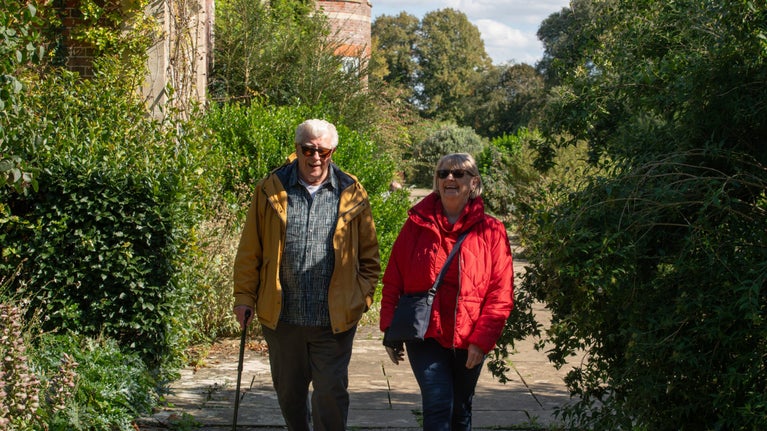
Become a member
Join today and help protect nature, beauty and history – for everyone, for ever. Enjoy access to more than 500 places with National Trust membership.
An Industrial Revolution, powered by water since 1584!
Aberdulais, Neath, Neath Port Talbot, SA10 8EU

| Asset | Opening time |
|---|---|
| Gwaith Tun a Rhaeadr | Tinworks and Waterfall | 10:30 - 15:30 |
| Siop Lyfrau Ail-law | Second-hand bookshop | 10:30 - 15:30 |
Our Bookshop is open during property opening hours, subject to volunteer availability.
The main car park surface is gravelled with embedded space markers. There is a pedestrian crossing available to use to cross the road. Cycle racks are available.
Dogs to be kept on short lead.
Accessible toilets are located near the entrance.
Level access and terrain throughout. Three Blue Badge car parking spaces. Accessible toilets. Wheelchairs available for hire.
Dogs are welcome at Aberdulais all year round with plenty of room for them to explore. We ask they remain on short leads whilst visiting.

The Waterwheel is currently inactive for specialist assessment and restoration. Europe's largest electricity generating waterwheel with historic roots from 1584 and throughout the Industrial Revolution.
Waterfall instrumental in over 400 years of Industrial Revolution. Home to a variety of wildlife.
The waterfall at Aberdulais truly is a force of nature. Whether it's a torrent or a trickle, it always looks beautiful. Discover more about its historic past and what to see during your visit.

Tucked into the steep-sided gorge of the River Dulais, Aberdulais Falls is home to one of Europe’s largest power-generating waterwheels. Towering over eight metres in diameter, this remarkable piece of engineering once drove the tinplate works that powered a local industry – and now, after years of standing still, it’s turning once again.

Join us for relaxed and inspiring art workshops with local artist Sue Davies. Whether you're a seasoned artist or just starting out, come and explore your creativity - let your artist side flow at Aberdulais Falls!
Join us for this interesting talk and learn about the work that is being done to honour those who have laid down their lives.
Learn about some of the thousand years of history of the Royal Mint. The Mint relocated from London to Llantrisant, however, we know that copper coins were also smelted at our very own Aberdulais site back in 1584!
Patti will be taking us on a walk to some of the quiet corners of Wales to find real and imagined people who are rooted to their little acre - an insight into Patti's new book entitled "The River That Flowed Black".
As water continued to cascade through the centuries, the industries continued to flow through time, and Aberdulais established its place as an industrial centre for pioneering. Discover how a small village in the Welsh valleys used cutting edge technologies to harness an ice age landscape and breath-taking waterfalls, to shape the industries that changed the world. St Giles Cymru at Aberdulais At Aberdulais we are working in partnership with St Giles Trust Cymru, an award-winning social justice charity, who will use some of the buildings and wider site to enable their work in helping people facing the greatest adversity to realise a positive future. Together, our two charities aim to work beyond our boundaries to benefit people and increase access for everyone to nature, beauty and history.
Discover how Aberdulais Tinworks and Waterfall has been at the heart of Welsh industry when a German engineer chose it as a secret location for smelting copper.

National Trust Cymru announce reopening of Aberdulais in partnership with St Giles Cymru, an award-winning social justice charity.


Join today and help protect nature, beauty and history – for everyone, for ever. Enjoy access to more than 500 places with National Trust membership.
By sharing your email address you’re agreeing to receive marketing emails from the National Trust and confirm you’re 18 years old or over. Please see our for more information on how we look after your personal data.